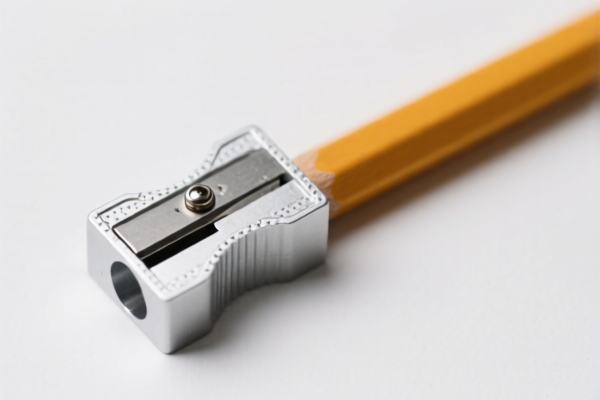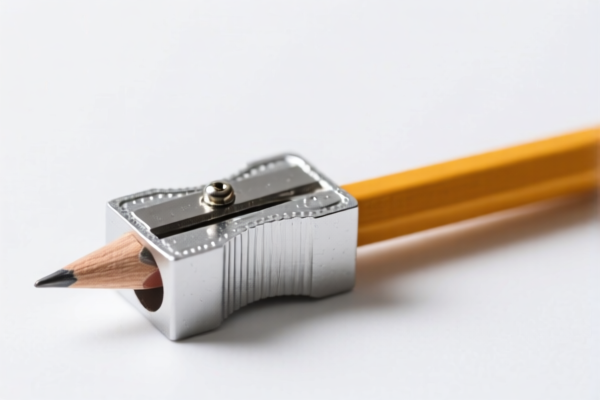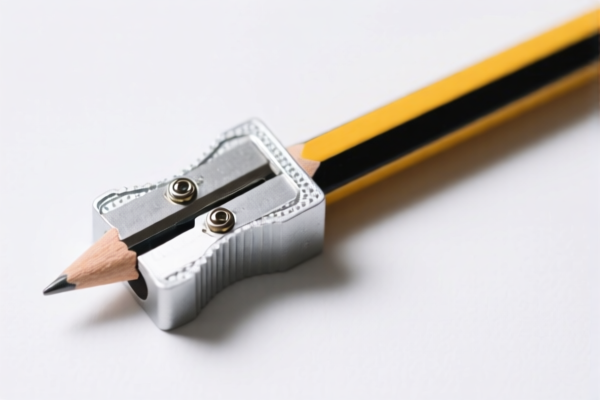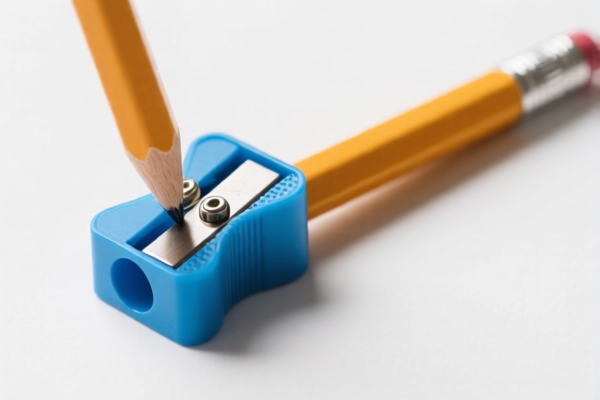| HS Code | Official Doc | Tariff Rate | Origin | Destination | Effective Date |
|---|---|---|---|---|---|
| 8208906000 | Doc | 55.0% | CN | US | 2025-05-12 |
| 8208903000 | Doc | 55.0% | CN | US | 2025-05-12 |
| 8214906000 | Doc | 0.2¢ each + 3.1%+30.0% | CN | US | 2025-05-12 |
| 8214909000 | Doc | 1.4¢ each + 3.2%+30.0% | CN | US | 2025-05-12 |
| 9601908000 | Doc | 41.2% | CN | US | 2025-05-12 |
| 9601906000 | Doc | 37.5% | CN | US | 2025-05-12 |
| 9620003090 | Doc | The rate applicable to the article of which it is an accessory+30.0% | CN | US | 2025-05-12 |
| 9620005000 | Doc | 60.3% | CN | US | 2025-05-12 |




Knife Sharpening System
A knife sharpening system is a tool designed to restore and maintain the cutting edge of knives. These systems offer a more consistent and controlled sharpening process compared to traditional methods like whetstones, particularly for users lacking extensive sharpening experience.
Materials
Knife sharpening systems incorporate a variety of materials:
- Abrasive Media: The core component responsible for removing metal and creating a new edge. Common abrasives include:
- Diamond: Provides very fast cutting action and is suitable for all knife types, though more expensive. Available in various grits, from coarse for repairing damage to fine for polishing.
- Ceramic: Offers slower but very precise sharpening, excellent for fine polishing and maintaining edges.
- Silicon Carbide: A good balance between cutting speed and precision, often used in pull-through sharpeners.
- Aluminum Oxide: Commonly found in lower-cost systems, suitable for general sharpening tasks.
- Guides: Typically made of steel, ceramic, or hard polymers. These maintain a consistent angle during sharpening.
- Base/Housing: Usually constructed from steel, plastic, or wood, providing a stable platform for the system.
Purpose & Function
The primary purpose of a knife sharpening system is to:
- Restore a dull edge: Remove worn or damaged metal to create a new, sharp cutting edge.
- Maintain sharpness: Regularly refine the edge to prolong the knife's cutting ability.
- Consistency: Ensure a uniform angle along the entire blade, leading to a more effective and durable edge.
- Control: Provide a guided sharpening process, minimizing the risk of damaging the knife or creating an uneven edge.
Usage Scenarios
Knife sharpening systems are used in a wide range of settings:
- Home Kitchens: Maintaining the sharpness of chef's knives, paring knives, and other kitchen cutlery.
- Professional Kitchens: Regularly sharpening knives for chefs and kitchen staff.
- Hunting & Fishing: Sharpening hunting knives, fillet knives, and other outdoor blades.
- Woodworking: Maintaining the edges of carving knives, chisels, and other woodworking tools.
- Tactical/Military: Sharpening tactical knives and survival tools.
Common Types
Several types of knife sharpening systems are available, each with its own advantages and disadvantages:
- Manual Pull-Through Sharpeners: The simplest type, featuring pre-set angles and abrasive slots. Easy to use but offer limited control and can be aggressive on the blade.
- Guided Angle Systems: Utilize a clamping mechanism and guides to maintain a consistent angle. Offer more control than pull-through sharpeners and are suitable for a wider range of knives. Examples include Lansky, Work Sharp Guided Sharpening System.
- Electric Sharpeners: Employ powered abrasive wheels and guides for fast and efficient sharpening. Offer convenience but can remove more metal than manual systems. Examples include Chef'sChoice, Work Sharp Electric.
- Belt Sanders (with Sharpening Attachments): Utilize abrasive belts for aggressive metal removal and shaping. Require skill and practice to use effectively.
- Honing Steels/Ceramic Rods: Technically not sharpeners, but used to align the blade's edge, removing micro-burrs and maintaining sharpness between full sharpenings.
- Water Stone Systems: Traditional method using stones with water as lubricant. Offers high precision but requires significant skill and practice. (Often considered separate from 'systems' but are a fundamental sharpening method).
The declared goods, “knife sharpening system,” encompass tools and equipment designed to restore the cutting edge of knives. These systems typically include components for guiding the knife blade during the sharpening process, abrasive materials (such as sharpening stones or diamond abrasives), and mechanisms for maintaining a consistent sharpening angle. The application scenarios include professional kitchens, hunting, woodworking, and general household use.
Based on the provided reference material, the following HS codes are relevant:
-
8208906000: This HS code covers “Knives and cutting blades, for machines or for mechanical appliances, and base metal parts thereof: Other: Other (including parts)”. This is a broad category that could include the blades themselves if they are part of a larger system, or components made of base metal.
- 82: Chapter 82 covers “Knives and cutting instruments.”
- 08: Heading 08 specifies “Knives and cutting blades.”
- 90: Subheading 90 denotes “Other.”
- 60: Further specifies “Other (including parts).”
- Tax Rate Details: Base tariff is 0.0%, with an additional tariff of 25.0%. After April 2, 2025, the additional tariff increases to 30.0%, resulting in a total tariff of 55.0%.
-
8208903000: This HS code covers “Knives and cutting blades, for machines or for mechanical appliances, and base metal parts thereof: Other: For shoe machinery”. If the knife sharpening system is specifically designed for use with shoe machinery, this code may be applicable.
- 82: Chapter 82 covers “Knives and cutting instruments.”
- 08: Heading 08 specifies “Knives and cutting blades.”
- 90: Subheading 90 denotes “Other.”
- 30: Specifically for “For shoe machinery.”
- Tax Rate Details: Base tariff is 0.0%, with an additional tariff of 25.0%. After April 2, 2025, the additional tariff increases to 30.0%, resulting in a total tariff of 55.0%.
-
8214906000: This HS code covers “Other articles of cutlery (for example, hair clippers, butchers' or kitchen cleavers, chopping or mincing knives, paper knives); manicure or pedicure sets and instruments (including nail files); base metal parts thereof: Other: Cleavers and the like not elsewhere specified or included: Other”. If the system includes cleavers or similar cutting tools not specifically covered elsewhere, this code may apply.
- 82: Chapter 82 covers “Knives and cutting instruments.”
- 14: Heading 14 specifies “Other articles of cutlery.”
- 90: Subheading 90 denotes “Other.”
- 60: Further specifies “Other.”
- Tax Rate Details: Base tariff is 0.2¢ each + 3.1%, with an additional tariff of 0.0%. After April 2, 2025, the additional tariff increases to 30.0%, resulting in a total tariff of 0.2¢ each + 3.1% + 30.0%.
-
8214909000: This HS code covers “Other articles of cutlery (for example, hair clippers, butchers' or kitchen cleavers, chopping or mincing knives, paper knives); manicure or pedicure sets and instruments (including nail files); base metal parts thereof: Other: Other (including parts)”. This is a general category for cutlery items not specifically classified elsewhere, and could include parts of the sharpening system.
- 82: Chapter 82 covers “Knives and cutting instruments.”
- 14: Heading 14 specifies “Other articles of cutlery.”
- 90: Subheading 90 denotes “Other.”
- 90: Further specifies “Other (including parts).”
- Tax Rate Details: Base tariff is 1.4¢ each + 3.2%, with an additional tariff of 0.0%. After April 2, 2025, the additional tariff increases to 30.0%, resulting in a total tariff of 1.4¢ each + 3.2% + 30.0%.
Customer Reviews
No reviews yet.